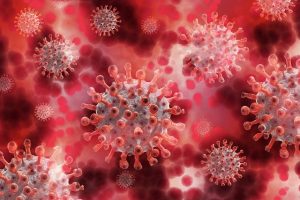The COVID-19 epidemic comes back again in Japan
- Mifepristone: A Safe and Effective Abortion Option Amidst Controversy
- Asbestos Detected in Buildings Damaged in Ukraine: Analyzed by Japanese Company
- New Ocrevus Subcutaneous Injection Therapy Shows Promising Results in Multiple Sclerosis Treatmen
- Dutch Man Infected with COVID-19 for 613 Days Dies: Accumulating Over 50 Virus Mutations
- Engineered Soybeans with Pig Protein: A Promising Alternative or Pandora’s Dish?
- Severe Fever with Thrombocytopenia Syndrome (SFTS): A Tick-Borne Threat with High Mortality
The COVID-19 epidemic comes back again in Japan
- Red Yeast Rice Scare Grips Japan: Over 114 Hospitalized and 5 Deaths
- Long COVID Brain Fog: Blood-Brain Barrier Damage and Persistent Inflammation
- FDA has mandated a top-level black box warning for all marketed CAR-T therapies
- Can people with high blood pressure eat peanuts?
- What is the difference between dopamine and dobutamine?
- How long can the patient live after heart stent surgery?
The COVID-19 epidemic comes back again in Japan, and Japan’s economy and society are facing enormous pressure.
Recently, due to the accelerated spread of the mutant BA.5 strain of Omicron, the situation of the COVID-19 pneumonia epidemic in Japan has deteriorated rapidly, and the number of new cases in a single day has hit a new high.
As Japan enters the “seventh wave” of the spread of the epidemic, Japan has been the country with the largest number of confirmed COVID-19s in the world for two consecutive weeks, and the medical system has been overwhelmed.
To this end, the Japanese government decided to set up a new “BA.5 Countermeasures Strengthening Declaration” issued by the prefectures themselves, in order to curb the increase in the number of infections.

Nearly 250,000 new cases per day
Entering August, the epidemic in Japan continued to run at a high level.
According to reports, Japan added nearly 250,000 new confirmed cases of the COVID-19 on August 3, setting the country’s highest daily increase again.
On the same day, the number of new confirmed cases in a single day in Japan’s 24 prefectures was the highest in their respective history.
In the week ended August 2, the number of newly confirmed cases of COVID-19s in Japan was 1.16 times that of the previous week.
Except for Aomori and Shimane, the newly confirmed cases in the remaining 45 prefectures continued to rise.
In terms of the infection rate per 100,000 population, Okinawa Prefecture has the highest infection rate of 2,353 people, and another 18 prefectures are at a high infection level of more than 1,000 people.
According to data released by the World Health Organization, in the week from July 25 to 31, there were 1,379,099 new confirmed cases of the COVID-19 in Japan, making it the country with the largest number of COVID-19 diagnoses in the world for two consecutive weeks.
According to WHO data, in the week from July 25 to 31, there were about 6.56 million new confirmed cases of the COVID-19 worldwide, with Japan accounting for about 21%.
The “Mainichi Shimbun” reported that the “Advisory Committee” of the Ministry of Health, Labour and Welfare of Japan’s Ministry of Health, Labour and Welfare to provide the government with advice on COVID-19 countermeasures assessed the current situation in Japan and believes that the increase in the number of infected people will continue, and Japan is in a state of “continuously refreshing the highest infection level”. stage.
According to the National Institute of Infectious Diseases of Japan, the new mutant strain BA.2.75 of Omicron was first confirmed in India in June this year, and then detected in more than 20 countries including the United States and the United Kingdom.
This new mutant strain was detected, and two more people were confirmed to be infected with BA.2.75 in Yamaguchi Prefecture on August 2.
According to the latest research results, BA.2.75 has stronger escape ability to the anti-epidemic barrier constructed by the COVID-19 vaccine.
Shigeru Fujimura, a professor at Tohoku Medical University in Japan, pointed out that BA.2.75 may first spread from Miyagi Prefecture in Japan as early as early September.
Other experts also pointed out that in summer, many festivals such as fireworks festivals are held all over Japan, which increases the opportunity for crowds to gather and objectively increases the risk of the spread of the epidemic.
The economy and society are deeply affected
The rapid expansion of the epidemic has an increasingly serious impact on all aspects of Japan’s economy and society.
According to reports, the West Japan Railway Company was affected by the epidemic, resulting in a shortage of drivers.
To this end, the company decided to stop the operation of some bus lines from August 8 to 21.
In addition, there is also a shortage of acetaminophen tablets, a commonly used antipyretic and analgesic drug that can be used to treat fever symptoms caused by infection.
Hikaru Nishida of the pharmacy of the West Japan Dispensing Center said that due to the surge in prescriptions, the drug inventory can only be maintained for about a week.
In Kanagawa Prefecture, where the number of newly confirmed cases of the COVID-19 has exceeded 10,000 in a row, the epidemic has partially paralyzed the operations of people’s livelihood departments such as postal services, public transportation, and health centers.
The staff of 2,618 of Japan Post’s 24,000 branches across the country were infected, and 170 branches stopped business. In Kanagawa Prefecture, 40 postal outlets have been infected, and 3 outlets have stopped business.
It is also reported that Japanese medical care and nursing institutions (nursing care refers to providing help for those who have difficulties in independent living based on taking care of daily life and daily life) are also deeply affected by the “seventh wave” epidemic.
Due to staff absences, some hospitals have closed parts of their campuses, and some nursing care facilities have difficulty operating.
Among the approximately 2,000 medical staff at Fukuoka University Hospital in Seonan Ward, Fukuoka City, more than 90 people were infected with COVID-19 pneumonia or became close contacts.
The hospital had to close two inpatient buildings, so patients could not be hospitalized. Six out of about 70 nursing staff in a nursing facility in Tobata Ward, Kitakyushu City were infected with the COVID-19. Due to the shortage of staff, the on-the-job staff had to work night shifts continuously, and the nursing service was insufficient.
In addition, affected by the deterioration of the epidemic situation, Japan’s domestic economic sentiment data declined for the first time in nearly five months.
The survey showed that Japan’s economic sentiment index in July 2022 fell by 0.1 percentage points from the previous month.
The catering, retail, service and other industries are most directly affected by the epidemic.
Although the Japanese government has not imposed restrictions on people’s travel, the passenger flow has decreased significantly.
Yakiniku restaurants in Kita Ward, Osaka City have been notified of banquet cancellations since mid-July. Despite being located in a prosperous neighborhood, there are still not enough customers.
In order to reduce costs, we have to close early when there are few customers. In addition, the tourism and catering industries in Kumamoto, Miyazaki, Fukuoka and other places are also facing a similar situation.
New outbreak response measures
In view of the general shortage of medical resources across the country and the negative impact of the epidemic on economic life in various places, the Japanese government intends to strengthen the declaration through new measures to curb the increase in the number of infections.
On July 29, the Japanese government announced the establishment of a new “BA.5 Countermeasures Strengthening Declaration” issued by the prefectures.
According to the analysis, this measure will allow the central and prefectural governments to call on the elderly and patients with underlying diseases to avoid crowded places with a higher risk of infection, and will also urge the public to get vaccinated as soon as possible, and further take measures such as telecommuting to avoid going out. measure.
As of August 3, seven prefectures including Kanagawa, Fukuoka, and Kumamoto have issued the “BA.5 Countermeasures Strengthening Declaration”. After the declaration was issued, the Japanese government recognized the area as a “BA.5 countermeasures strengthening area” and could send staff to provide guidance.
However, compared with the “emergency declaration” and “key measures to prevent the spread”, this declaration has obvious shortcomings: it does not require businesses to shorten business hours, restrict travel activities, and there are no mandatory and punitive measures.
Despite the sudden increase in the number of confirmed cases, the Japanese government has expressed negative views on measures including key measures to prevent the spread, citing reasons such as maintaining economic and social activities.
In addition, given that the medical system across Japan is overburdened and on the verge of being paralyzed, Japanese epidemic prevention experts and local officials advocate “reducing the burden” on the front line of the medical system: first, it is recommended to cancel the “full control” of infected people; The third is to guide mildly infected people to isolate themselves at home and not go to the hospital. The above-mentioned measures have also raised concerns in Japanese society.
The Japanese government is cautious about whether to cancel the “full control” and other measures, saying that it will conduct research after the “seventh wave” of the epidemic is over.
However, in order to reduce the burden on the medical system, at present, the Japanese government has decided to simplify the COVID-19 patient information management system “HER-SYS” and reduce unnecessary filling-in items while continuing to “full control” of infected people.
(source:internet, reference only)
Disclaimer of medicaltrend.org
Important Note: The information provided is for informational purposes only and should not be considered as medical advice.



